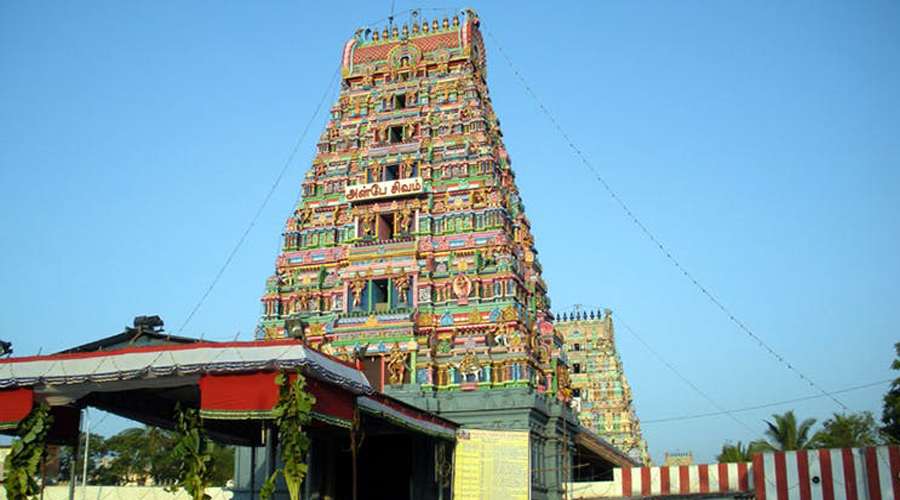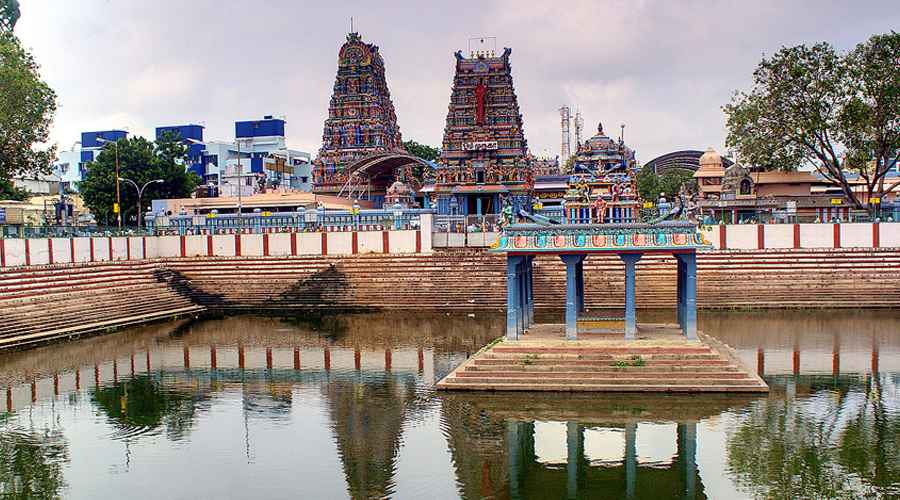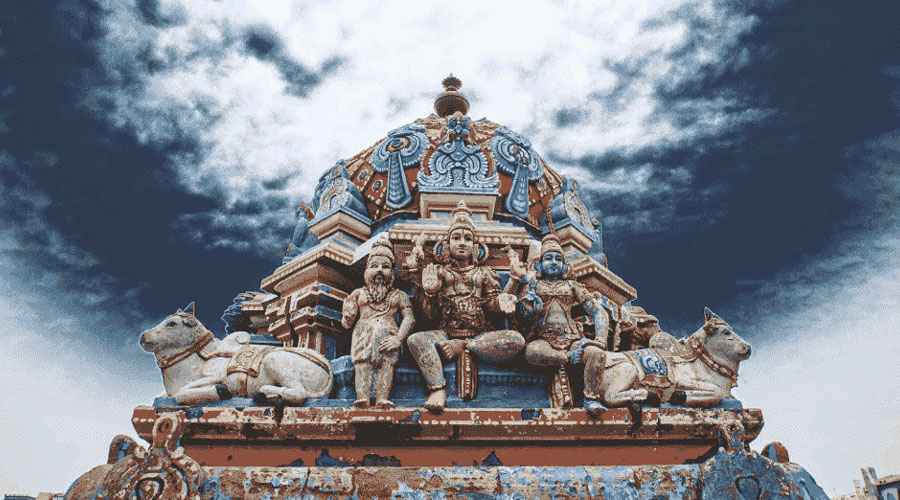Nestled in the heart of Ahmedabad, the Nagardevi Shri Bhadrakali Mata Temple stands as a historic and spiritual beacon for the city’s residents and devotees. Revered as the “Nagar Devi” or city goddess of Ahmedabad, the temple is deeply woven into the cultural, historical, and religious fabric of this vibrant metropolis. Its origin traces back several centuries, and it continues to be a pivotal place of worship, where tradition converges with daily life in the bustling city.
Historical Origins and Evolution
The temple’s earliest history goes back to when Ahmedabad was known as Karnavati, with records suggesting the presence of a shrine dedicated to Goddess Bhadrakali in the old city area of Manek Chowk. Over time, this original temple faced destruction due to invasions and upheavals, notably during Mughal incursions.
When Sultan Ahmed Shah established Ahmedabad in the 15th century, he strategically reconstructed the temple within the Bhadra Fort precinct, on the advice of his royal priest, to ensure the guardian deity’s presence overseeing the newly founded city. This reconstruction established the temple’s importance as a protective spiritual force believed to safeguard the city and its inhabitants. The temple has since undergone several renovations, with the current prominent structure dating to the 1920s under the stewardship of Ramnani Maharaj.
Architectural and Cultural Significance
The Nagardevi Shri Bhadrakali Mata Temple features traditional Hindu temple construction, blending local Gujarati architectural elements with spiritual symbolism. The temple’s sanctum houses the powerful idol of Goddess Bhadrakali, depicted seated majestically on a throne (Singhasan). Her both feet are visible, symbolizing accessibility and her protective nature toward her devotees.
A distinctive feature of the temple is the daily changing vehicles or “swaran,” on which the goddess is ceremoniously placed. These exquisite mounts include lions, elephants, Nandi (bull), and lotuses, each signifying different aspects of power, purity, and divinity. These rituals hold special significance for devotees, especially the local business community that offers lotus flowers at her feet while commencing new ventures, seeking her blessings for success and prosperity.
The temple’s location in the old city makes it an integral part of Ahmedabad’s daily life. It is surrounded by busy marketplaces and narrow lanes that buzz with vibrant energy. This intermingling of spirituality and commerce is one of the reasons why the Bhadrakali Temple is more than just a religious site; it acts as a focal point for the local community, melding devotion with economic activities.
Religious and Social Activities
The temple holds a special place in the hearts of the residents of Ahmedabad and plays a central role in community celebrations and religious life. Twice annually, grand Annakut festivals are organized after the Sharad and Chaitra Navratris, during which a grand feast is prepared, and thousands gather to celebrate and receive prasad. Additionally, the temple hosts the Devi Bhagwat recitations in the last week of January, attracting devotees who seek spiritual guidance and blessings.
Every Sunday, bhog prasad distribution attracts large crowds, fostering a sense of community and charity. These traditions underscore the temple’s role not only as a place of worship but also as a hub for social cohesion and charitable activities.
An important recurring event is the Nagar Devi Yatra, a procession that symbolically carries the goddess’s silver slippers (paduka) through the old city, acknowledging her protective guardianship over Ahmedabad. This yatra has been gaining popularity as part of the city’s foundation day celebrations, emphasizing Ahmedabad’s cultural unity and the goddess’s continuing relevance.
Devotees and Notable Visits
The temple draws a diverse crowd of daily worshippers and visitors, ranging from locals seeking blessings to tourists fascinated by its history and religious traditions. The temple is especially frequented by business communities, who consider their first offerings to Bhadrakali auspicious for new ventures, demonstrating the intertwining of faith and commerce.
Notably, India’s Prime Minister Narendra Modi visits the temple every year during the New Year, reflecting its importance as a spiritual and cultural landmark in Ahmedabad.
The temple is well-regulated and secured, including the presence of female police officers to ensure a safe and orderly environment, recognizing the temple’s significance as a bustling spiritual center.
Architectural Highlights and Surroundings
The temple is situated within the historic Bhadra Fort area, one of Ahmedabad’s oldest parts, which adds to its aura of antiquity and sanctity. The temple precincts bustle with devotees and traders, with nearby stalls offering a variety of pooja items and religious paraphernalia.
Inside the Garbhagriha (sanctum sanctorum), beside the idol of Bhadrakali, a figure of Bhairav, the fierce guardian deity, is also enshrined, enhancing the temple’s aura of protection and power. The temple’s architecture features intricate carvings and traditional motifs symbolizing divine protection and strength.
The temple’s location in a congested yet spiritually vibrant part of the city also symbolizes the historical resilience of Ahmedabad through centuries of change and challenges.
Spiritual Importance and Beliefs
Bhadrakali, as the city goddess, holds an essential place in local religious consciousness. She is considered the fierce yet benevolent protectress who wards off evil and blesses her devotees with courage and peace. From the smallest shop owners to large merchants, prayers are offered here with heartfelt devotion, believing that the goddess’s grace brings prosperity and success.
The temple’s lively rituals, including daily aartis at 8:30 AM and 9:00 PM, heighten the spiritual ambiance for devotees. Many visitors recount feeling an inner calm and renewed strength after offering their prayers at the temple, testifying to its spiritual potency.
Conclusion
The Nagardevi Shri Bhadrakali Mata Temple stands as a testament to Ahmedabad’s rich cultural heritage and its enduring spiritual traditions. From its ancient origins during the Karnavati era to its present-day vibrancy in the bustling old city, the temple embodies the protective spirit of the city’s guardian goddess.
This temple is much more than a historic structure; it shapes the daily lives of countless devotees and businesses, weaving faith into the urban tapestry of Ahmedabad. Celebrated with grand festivals and renowned for its sacred rituals, the temple continues to inspire reverence, community spirit, and harmonious living for present and future generations.
For visitors to Ahmedabad, a visit to the Nagardevi Shri Bhadrakali Mata Temple is not just a religious experience but a slice of the city’s soul—where history, devotion, and the pulse of life converge in sacred harmony.


